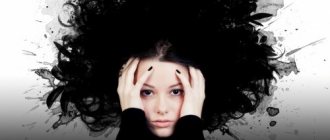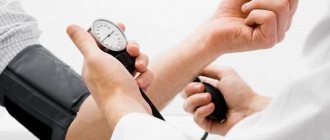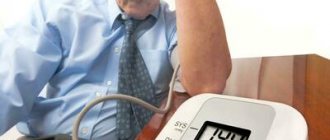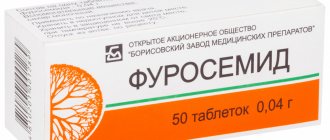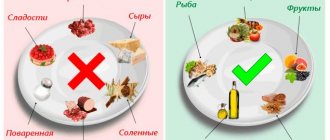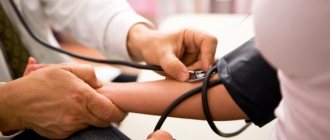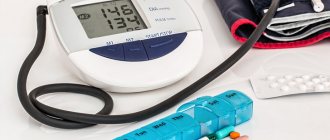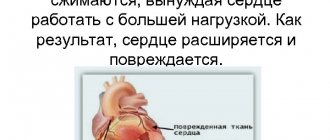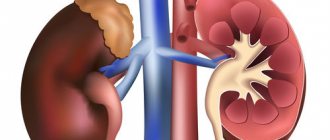First aid for a heart attack
Characteristic signs (symptoms) of a heart attack (myocardial infarction):
• sudden (paroxysmal) pressing, squeezing, burning, aching pain in the chest (behind the sternum), lasting more than 5 minutes;
• similar pains are often observed in the left shoulder (forearm), left shoulder blade, left half of the neck and lower jaw, both shoulders, both arms, the lower part of the sternum along with the upper abdomen;
• lack of air, shortness of breath, severe weakness, cold sweat, nausea often occur together, sometimes following or preceding discomfort/pain in the chest;
• it is not uncommon for these manifestations of the disease to develop against the background of physical or psycho-emotional stress, but more often with some interval after them.
Uncharacteristic signs that are often confused with a heart attack:
• stabbing, cutting, pulsating, drilling, constant aching pain for many hours and not changing its intensity in the heart area or in a specific clearly defined area of the chest.
Algorithm for emergency actions in case of a heart attack (advice to the patient)
If you or someone else suddenly has the above characteristic signs of a heart attack, even with weak or moderate intensity, which last more than 5 minutes, do not hesitate, immediately call an ambulance team. Do not wait more than 10 minutes - in such a situation it is life-threatening.
Remember that being intoxicated in this deadly situation is not a reasonable excuse for delaying calling an ambulance!
If you have symptoms of a heart attack and there is no way to call an ambulance, then ask someone to take you to the hospital - this is the only right decision. Never drive yourself unless you have no other choice.
In the most optimal scenario, if a heart attack occurs, you must follow the instructions received from your attending physician; if there are no such instructions, then you must act according to the following algorithm:
• Immediately after an attack occurs, sit down (preferably in a chair with armrests) or lie in bed with the head of the bed raised, take 0.25 g of acetylsalicylic acid (aspirin) (chew the tablet, swallow) and 0.5 mg of nitroglycerin (spray one inhalation dose into the cavity mouth while holding your breath, place one tablet/capsule under the tongue, first bite the capsule, do not swallow); free your neck and provide fresh air (open the vents or windows).
• If pain persists 5-7 minutes after taking acetylsalicylic acid (aspirin) and nitroglycerin, it is imperative (life-saving) to call an ambulance and take nitroglycerin a second time.
• If pain persists 10 minutes after taking the second dose of nitroglycerin, it is necessary to take nitroglycerin a third time.
• If after the first or subsequent doses of nitroglycerin there is severe weakness, sweating, shortness of breath, you need to lie down, raise your legs (on a bolster, etc.), drink 1 glass of water and then, as with a severe headache, do not take nitroglycerin.
• If the patient has previously taken drugs that lower blood cholesterol from the statin group (simvastatin, lovastatin, fluvastatin, pravastatin, atorvastatin, rosuvastatin), give the patient his usual daily dose and take the drug with you to the hospital.
Attention!
A patient with a heart attack is strictly forbidden to get up, walk, smoke or eat until the doctor’s special permission;
You should not take aspirin
(acetylsalicylic acid) if you are intolerant to it (allergic reactions), as well as if there is a clear exacerbation of gastric and duodenal ulcers;
Nitroglycerin should not be taken
if there is severe weakness, sweating, or if there is severe headache, dizziness, or acute impairment of vision, speech, or coordination of movements.
How to provide first aid?
Every experienced hypertensive patient, as a rule, is well aware of his disease and has medications at home that he uses to relieve a hypertensive crisis. First aid can be provided by administering drugs intramuscularly, which will relieve the symptoms of high blood pressure.
It is worth considering that this practice is used only for uncomplicated first-degree hypertensive crisis. These drugs include: “Furosemide”, “Dibazol”, “Magnesia sulfate”, “Anspasmodics”, “No-shpa” and “Papaverine”.
Often, during a first-degree hypertensive crisis, intramuscular administration of these drugs completely relieves the symptoms of the attack and normalizes the patient’s blood pressure.
It is impossible to predict the occurrence of pathology. This can happen at home, at work, in a restaurant, on the street. It is very important that a hypertensive crisis be eliminated quickly, so emergency care must be provided promptly, the algorithm is described below.
Types of hypertensive crises
There are two main types of hypertensive crises.
I. Hypertensive crisis of the first type (or isolated systolic hypertension) is accompanied by a rapid significant increase in systolic pressure with a moderate increase in diastolic pressure. It is characterized by agitation of the patient, often accompanied by chills, palpitations, and a feeling of fear.
If there is a predominant increase in systolic pressure over diastolic pressure (for example, 160/85 mmHg), then taking diuretics does not make sense. The main task in this case is to relieve the load on the myocardium of the heart by dilating the peripheral arteries. Here you have a choice of the following drugs. Anaprilin - for tachycardia, if the conduction system of the heart is not impaired. Captopril - when systolic pressure is normal and there is no danger of renal artery stenosis. Corvalol, valemidine, glycine will help reduce nervous excitement and slightly reduce the rate of increase in blood pressure.
Such crises are also called symptomatic. They are usually classified as benign. These crises occur due to the activation of internal body systems that increase blood pressure. They usually do not lead to damage to target organs and pass without particularly serious consequences for the body.
With self-help or medical care, the pressure returns to normal within a few hours.
II. A hypertensive crisis of the second type develops more slowly, over 24–48 hours, but is much more severe. A significant increase in systolic and diastolic pressure, headaches, nausea, vomiting, and heart rhythm disturbances are the main characteristic signs for this type. Hypertensive crises of this type are also called malignant.
Malignant crises almost always end badly. These crises are caused by the activation of long-term blood pressure systems. In such cases, blood pressure rises for several days and even weeks. The person does not experience any special symptoms. In such cases, the patient responds poorly to antihypertensive therapy, and an increase in intracranial pressure is observed. Prolonged headache, chest pain, swelling of the arms, legs, and face do not develop quickly. And this should alert you. It is necessary to urgently consult a doctor or call an ambulance.
The pressure should be reduced gradually and under the supervision of medical personnel. In such cases, the doctor’s main task is to dilate the renal arteries. As a result of intravenous administration of magnesium sulfate, the brain will not be allowed to swell and the blood will be optimally redistributed, dilating the renal arteries. The so-called catecholamine crises, which develop due to problems with the adrenal glands, are extremely dangerous. In a few minutes, blood pressure can rise to 250-300 mmHg. A person may die as a result of a heart attack or stroke. If the ambulance is called on time and arrives quickly, then alpha-blockers (for example, Urapidil) will be an effective remedy.
Sometimes the diastolic growth rate exceeds the systolic one. It should be borne in mind that if diastolic pressure rises faster than systolic (for example, 145/110 mmHg), then the first thing you should think about is whether you took diuretics (diuretics) on time? Nifedipine, for example, is also indicated for bradycardia (too low heart rate) and if the doctor’s ECG analysis does not reveal any abnormalities in the conduction system of the heart. Nifedipine may be useful if hypocalcemia is ruled out.
First aid for sudden death (tips for eyewitnesses)
Most often, sudden death occurs due to cessation of cardiac activity.
The main signs (symptoms) of sudden death:
• Sudden loss of consciousness, often accompanied by agonal movements (a standing or sitting person falls, convulsive muscle tension, involuntary urination and defecation are often observed; a lying person sometimes makes a convulsive attempt to sit up or turn on his side).
• Sudden complete cessation of breathing, often after a short period (5-10 seconds) of agonal pseudobreathing: the patient makes wheezing and/or gurgling sounds, sometimes similar to a convulsive attempt to say something.
First aid for acute heart failure
Acute heart failure (AHF)
is a serious pathological condition that develops in patients with various heart diseases and hypertension. This is one of the most common reasons for calling an ambulance and hospitalization of patients, as well as mortality in our country and around the world.
The main manifestations (symptoms) of acute heart failure are:
• heavy, frequent (more than 24 per minute) noisy breathing - shortness of breath, sometimes reaching the level of suffocation, with predominant difficulty in inhaling and a clear increase in shortness of breath and cough in a horizontal position. A sitting position or a lying position with the head of the head raised up alleviates the patient's condition;
• often when breathing, wet, squelching wheezing/sounds, interrupted by coughing, become audible; in the terminal stage, breathing takes on a bubbling character with the appearance of foam at the patient’s mouth;
• characteristic sitting posture of the patient, resting his straight arms on his knees or on the seat (to facilitate breathing).
Acute heart failure can develop very quickly and lead to the death of the patient within 30-60 minutes. In most cases, 6-12 or more hours pass from the first clinical signs to severe manifestations of AHF, but without medical care, the absolute majority of patients with AHF die.
Algorithm of emergency actions for acute heart failure (advice to the patient)
If the above symptoms of AHF appear in patients with hypertension or heart disease, it is necessary:
• call emergency medical assistance;
• give the patient a sitting position, preferably in a chair with armrests on which he can lean and engage the intercostal muscles in the act of breathing;
• provide physical and psycho-emotional peace and fresh air by ventilating the room;
• place your feet in a large container (basin, tank, bucket, etc.) with hot water;
• in extremely severe cases, tourniquets are applied to the legs in the groin area, compressing the superficial veins, but not the deep arteries, which reduces blood flow to the heart and thereby facilitates its work.
If the patient or first aid provider has experience in the use of nitroglycerin, it is prescribed in a dose of 0.4 (0.5) mg (inhalation into the oral cavity is carried out under the root of the tongue, the tablet/capsule is placed under the tongue, the capsule must first be bitten , do not swallow). If the patient’s well-being improves after using nitroglycerin, it is reapplied every 10-15 minutes until the arrival of the emergency medical team. If there is no improvement in the patient’s well-being after the next dose of nitroglycerin, the drug is no longer used.
Attention!
A patient with AHF must exclude all physical activity; it is strictly forbidden to walk, smoke, drink water and take liquid food until special permission from the doctor; Nitroglycerin should not be taken if blood pressure is less than 100 mmHg. Art. with severe headache, dizziness, acute impairment of vision, speech or coordination of movements.
All patients with hypertension or heart disease with shortness of breath and swelling in the legs should discuss with their doctor what medications should be taken if AHF develops, clearly write down their names, dosage and time sequence (algorithm) for taking them, and also check with the doctor if what manifestations of the disease require urgent medical attention. Each such patient needs to create an individual first aid kit for AHF and constantly have it with him.


